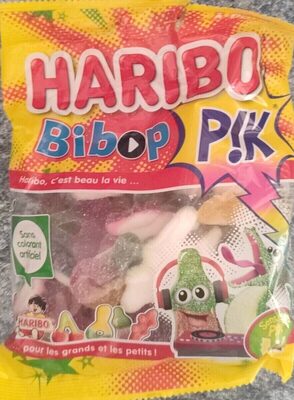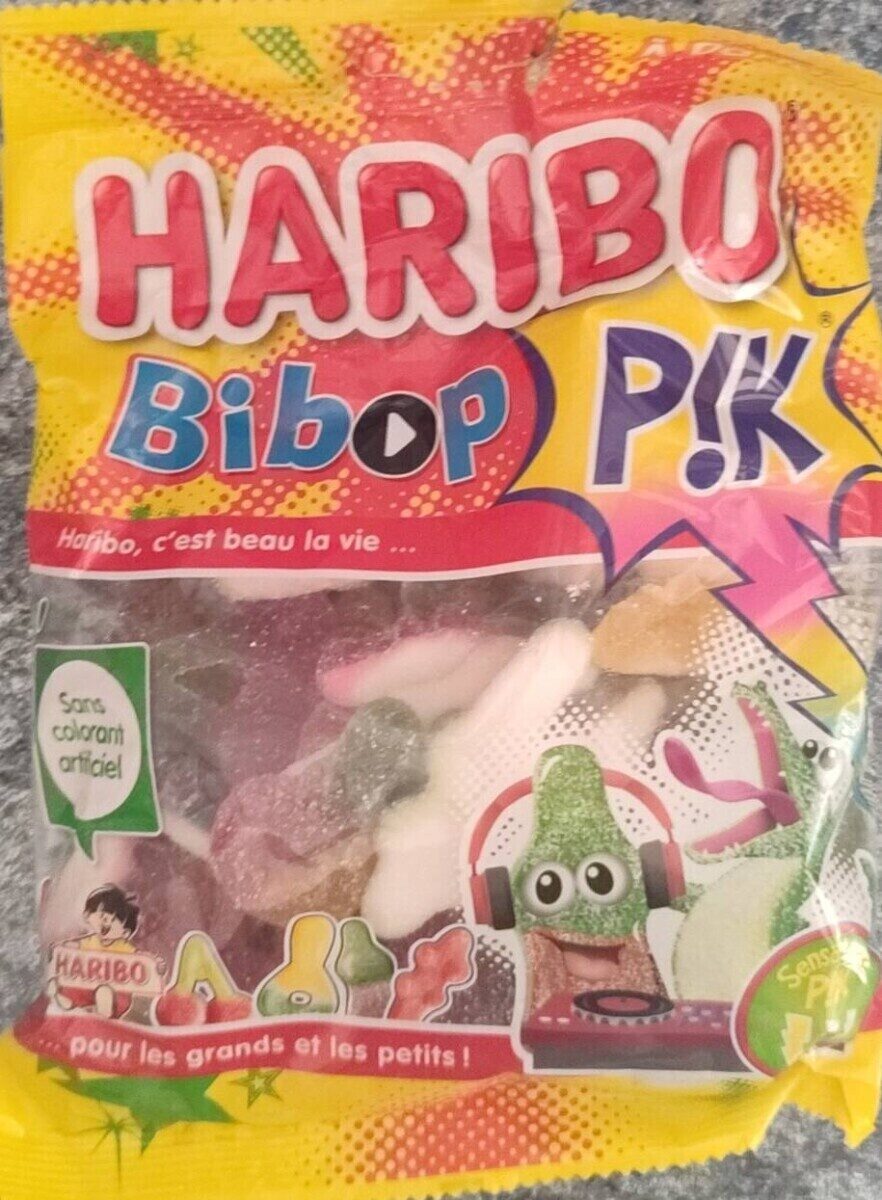Haribo Bibop P!K - 250g
Ambiguous barcode: This product has a Restricted Circulation Number barcode for products within a company. This means that different producers and stores can use the same barcode for different products.
×
This product page is not complete. You can help to complete it by editing it and adding more data from the photos we have, or by taking more photos using the app for Android or iPhone/iPad. Thank you!
×
Barcode: 26055510
Quantity: 250g
Packaging: Plastic, Bag, fr:Film en plastique, fr:Sachet en plastique
Brands: Haribo
Categories: Snacks, Sweet snacks, Confectioneries, Candies, Gummi candies
Labels, certifications, awards: Vegetarian, No colorings
Stores: Aldi
Countries where sold: France
Matching with your preferences
Report a problem
Data sources
Product added on by tacite
Last edit of product page on by epfoodeye.
Product page also edited by ecoscore-impact-estimator, g123k, kiliweb, openfoodfacts-contributors, packbot, quechoisir, roboto-app, tacite-mass-editor, yuka.VC93SENaNFl0OWtndWZFZXJpNkkvTU5mNFlTbFQzS1ZHOHMwSVE9PQ, yuka.VpFCZ8GpQZEFQ8rsyI491z2mSf_GU_JLIiQnog, yuka.sY2b0xO6T85zoF3NwEKvlhdbTOPToDGcG0TRo3e5_vjSf4PxaPpdyZXGFqs, yuka.sY2b0xO6T85zoF3NwEKvlk9mdtWAhy7JPhfmxkaI_dbVFKbRSolf2rSiFas, yuka.sY2b0xO6T85zoF3NwEKvlkNJcPGAkj75GEDfw3OI_9aqM5HqSNxez5Pla6s, yuka.sY2b0xO6T85zoF3NwEKvlkZ_CuL1sx3oDzbvxECBxvSwM5HNcftO8JrZHao, yuka.sY2b0xO6T85zoF3NwEKvlkhtccfdpwn5MiPfkFCMy42xEJX2bIFL67arLqs, yuka.sY2b0xO6T85zoF3NwEKvlmdrUPCFuh7FPTfhsH-66dzRCMfGfd9K-Kz2a6o, yuka.sY2b0xO6T85zoF3NwEKvlml2Q9zUnyzmFjHloXenxoyCKIbqTd5K4LLIF6s, yuka.sY2b0xO6T85zoF3NwEKvlmx5Udrl-R39OjbUl2eByPyRB5zBZ8xbvYj3Mas.












